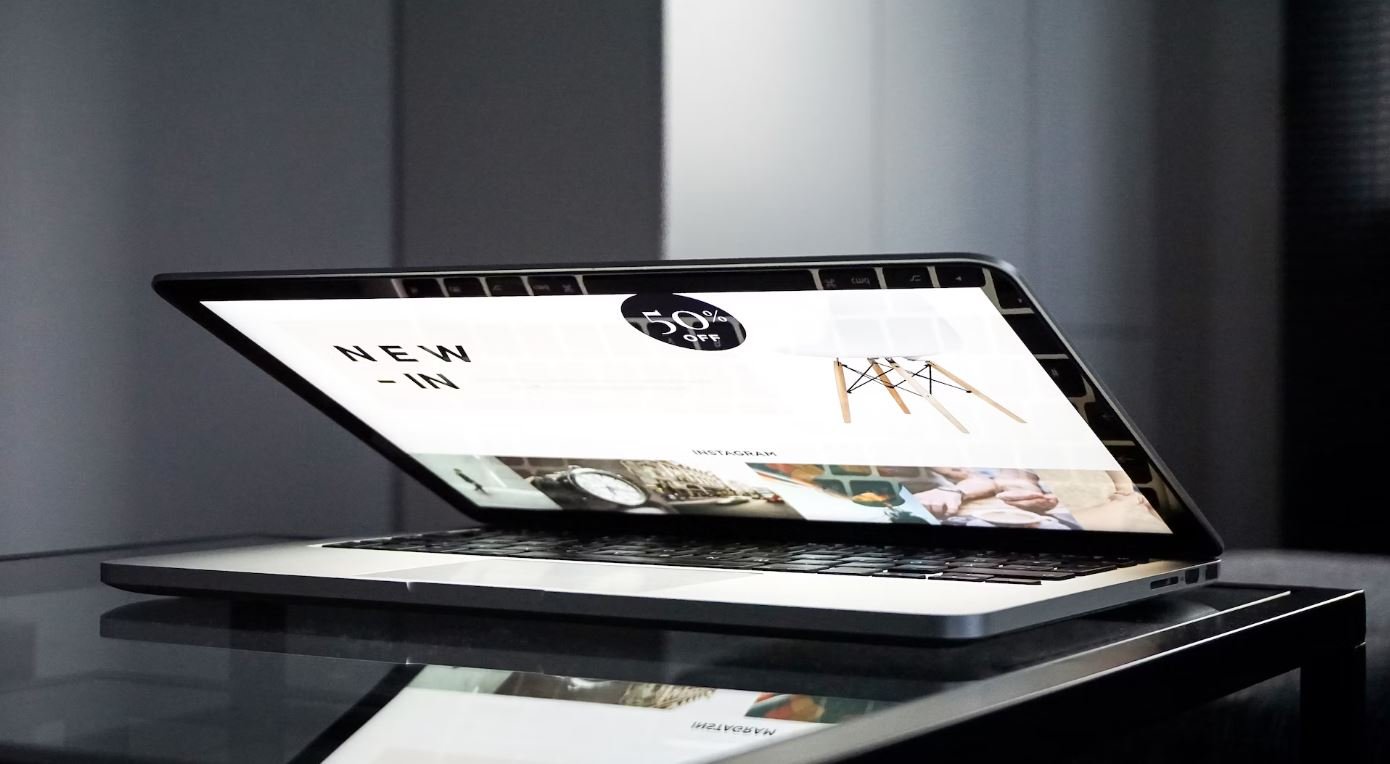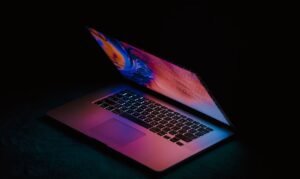Deepfake Zoom Call
With the rise in popularity of video conferencing, the adoption of platforms like Zoom has soared, leading to new challenges and concerns. One of these concerns is the emergence of deepfake technology being used to manipulate video calls. Deepfakes are highly realistic and manipulated videos that use artificial intelligence algorithms to replace one person’s face with another. This article explores the dangers of deepfake Zoom calls and provides insights on how to stay vigilant in the face of this emerging threat.
Key Takeaways:
- Deepfake technology can be used to manipulate video calls, particularly on platforms like Zoom.
- Deepfakes are highly realistic videos that use AI algorithms to replace one person’s face with another.
- Deepfake Zoom calls pose risks to privacy, security, reputation, and even financial fraud.
Deepfake technology has evolved rapidly in recent years, making it increasingly difficult to identify manipulated videos. *These deepfakes can imitate the voice and facial expressions of individuals with remarkable likeness, creating a convincing illusion.* In a business context, this could lead to serious consequences, such as impersonation, misinformation, or even damaging personal and professional relationships.
To better understand the impact of deepfake Zoom calls, let’s examine some real-world examples:
Deepfake Zoom Call Examples:
| Scenario | Impact |
|---|---|
| A deepfake CEO joins a conference call | May mislead employees, facilitate corporate espionage, or lead to financial fraud. |
| A deepfake politician participates in a public debate | Can manipulate public opinion, create false narratives, and undermine democratic processes. |
As the technology behind deepfakes becomes more advanced and accessible, it is crucial to adopt preventive measures to protect against such threats. Here are some steps organizations and individuals can take:
Protecting Against Deepfake Zoom Calls:
- Enable two-factor authentication to prevent unauthorized access to your Zoom meetings.
- Regularly update your video conferencing software to ensure you have the latest security features.
- Educate yourself and your team about deepfake technology and its potential risks.
- Establish a protocol for verifying the identity of participants in important meetings.
Now, let’s dive deeper into the potential risks associated with deepfake Zoom calls.
Risks of Deepfake Zoom Calls:
- Privacy: Deepfake Zoom calls can compromise the privacy of participants by impersonating someone and gaining access to sensitive information.
- Security: Manipulated videos can be used to deceive participants or spread malware through social engineering tactics.
- Reputation: Being involved in a deepfake Zoom call can damage an individual’s or organization’s reputation, particularly if false or harmful statements are made.
- Financial Fraud: Deepfake video calls can be used to trick individuals into sharing confidential financial information or making unauthorized transactions.
While it may be challenging to completely prevent deepfake attacks, maintaining a healthy skepticism, verifying identities, and implementing robust security measures can greatly reduce the risks. Remember, staying informed and proactive is crucial in this rapidly evolving digital landscape.
Conclusion:
In conclusion, the rise of deepfake technology poses challenges and risks, particularly when it comes to video conferencing platforms like Zoom. However, by staying vigilant, adopting preventive measures, and remaining aware of the potential dangers, individuals and organizations can mitigate the threats posed by deepfake Zoom calls. Safeguarding privacy, security, reputation, and financial well-being should be a priority for everyone in the era of advanced digital manipulation.

Common Misconceptions
Misconception 1: Deepfake Zoom calls are easily detectable
One common misconception about deepfake Zoom calls is that they are easy to detect. However, with advancements in deep learning algorithms and artificial intelligence, deepfakes have become increasingly realistic and more challenging to spot.
- Deepfake techniques are constantly evolving, making it harder to distinguish them from real videos.
- Without proper analysis and advanced tools, deepfake Zoom calls might go undetected.
- Deepfake creators constantly improve their methods to overcome detection techniques.
Misconception 2: Only high-profile individuals are targeted
Another misconception is that only high-profile individuals are targeted in deepfake Zoom calls. In reality, anyone can be a potential victim of this technology.
- Deepfake Zoom calls can be used as part of phishing attacks or other fraudulent activities targeting regular individuals.
- Cybercriminals may exploit deepfakes to deceive people for financial gain, irrespective of their social status.
- As deepfake technology becomes more accessible, the potential for misuse increases across different sectors.
Misconception 3: Deepfake Zoom calls are harmless pranks
Some individuals consider deepfake Zoom calls as harmless pranks or practical jokes. However, these calls can have serious repercussions and violate an individual’s privacy and trust.
- Deepfake Zoom calls can be used to spread misinformation or manipulate public opinion.
- Victims of deepfake Zoom calls may experience emotional distress, reputational damage, or personal harm.
- By normalizing deepfake pranks, the seriousness and potential risks associated with this technology can be undermined.
Misconception 4: Deepfake Zoom calls are a recent phenomenon
Many people believe that deepfake Zoom calls are a recent phenomenon, emerging only in recent years. However, the development of deepfake technology began several years ago.
- Deepfake technology has been evolving since its inception in the late 2010s.
- Advancements in deep learning algorithms and access to powerful computing resources have accelerated the progress of deepfake technology.
- With the widespread use of video conferencing platforms like Zoom, deepfake Zoom calls have gained more attention in recent times.
Misconception 5: Deepfake Zoom calls are always malicious
While there have been cases where deepfake Zoom calls were used for malicious activities, it is a misconception that all deepfake Zoom calls have malicious intent.
- Deepfakes can also be created for educational or creative purposes, such as content creation or visual effects.
- Researchers and technologists use deepfake technology to study its implications and develop countermeasures.
- Understanding the intentions behind deepfake Zoom calls is crucial before making a judgment about their nature.

The Rise of Deepfake Technology
Deepfake technology, a subfield of artificial intelligence, has advanced rapidly in recent years, allowing for the creation of highly convincing fake media content. Among its various applications, one of the most concerning is its potential use in video calls, such as Zoom, where it can be employed to manipulate and deceive users. In this article, we explore the growing phenomenon and its implications.
Table: Notable Deepfake Video Call Hoaxes
Below are a few instances of high-profile deepfake video call hoaxes that have garnered public attention:
| Hoax | Description | Impact |
|---|---|---|
| Political Leader Impersonation | A political leader’s deepfake was used to spread false statements during a video conference. | Potential diplomatic fallout and public confusion. |
| Celebrity Prank Call | A deepfake impersonating a famous celebrity called into a live talk show for a prank. | Generated significant media buzz but no lasting consequences. |
| Corporate Sabotage | A deepfake executive attendee disseminated misleading information in a business meeting. | Potential financial losses due to misinformation. |
Table: Techniques to Detect Deepfake Video Calls
Experts have developed various methods to identify and expose deepfake videos during video conferencing:
| Detection Technique | Description | Effectiveness |
|---|---|---|
| Facial Movement Analysis | Uses advanced algorithms to detect unnatural facial movements or lag in real-time. | Highly effective, but not foolproof. |
| Audio Analysis | Compares speech patterns and voice characteristics to detect inconsistencies. | Effective against certain types of deepfake audio. |
| Metadata Analysis | Examines hidden information in the video file to identify signs of manipulation. | Not always reliable as metadata can be altered or removed. |
Table: Deepfake Usage Statistics
Deepfake technology has seen a surge in usage and dissemination across different domains:
| Sector | Percentage of Deepfake Usage |
|---|---|
| Online Social Platforms | 42% |
| News and Media | 25% |
| Political Campaigns | 18% |
| Entertainment Industry | 15% |
Table: Potential Legal Consequences of Deepfake Video Calls
The misuse of deepfake technology in video calls raises numerous legal concerns:
| Legal Consequence | Description | Severity |
|---|---|---|
| Defamation | Using deepfakes to spread false and damaging information about an individual. | Can lead to reputational harm and financial losses for the targeted individual. |
| Fraud | Manipulating videos for financial gain or to deceive others. | Potential criminal charges and significant legal penalties. |
| Privacy Violation | Creating deepfake videos without consent and distributing them without permission. | Invasion of privacy and potential legal action. |
Table: Highest-Rated Deepfake Detection Tools
To combat the rising threat of deepfakes, various software tools have been developed:
| Detection Tool | Rating (out of 5) |
|---|---|
| Deepware | 4.7 |
| TrueGuard | 4.5 |
| FakeSpotter | 4.3 |
| DebunkAI | 4.1 |
Table: Countries with Legislation Against Deepfakes
Several countries have implemented legal measures to address the issue of deepfakes:
| Country | Date of Legislation |
|---|---|
| United States | 2019 |
| Canada | 2020 |
| Singapore | 2021 |
| Germany | 2021 |
Table: Deepfakes and Cybersecurity Risks
Besides the obvious social impact, deepfakes present significant cybersecurity risks:
| Cybersecurity Risk | Description |
|---|---|
| Phishing Attacks | Using impersonation deepfakes to manipulate individuals into revealing sensitive information. |
| Blackmail | Creating deepfakes to extort money or gain leverage over targeted individuals. |
| Disinformation and Manipulation | Spreading misleading content to influence public opinion or incite unrest. |
Table: Deepfake Zoom Call Countermeasures
To protect users from deepfake video calls, platforms like Zoom employ various countermeasures:
| Countermeasure | Description |
|---|---|
| AI Detection | Using artificial intelligence algorithms to flag potentially malicious deepfakes. |
| Identity Verification | Implementing stricter user verification processes, including biometric identification. |
| Secure Encryption | Employing robust encryption protocols to prevent tampering and unauthorized access. |
Conclusion
The increasing popularity of deepfake technology poses significant challenges for video conferencing platforms and individuals alike. As we have explored in this article, the potential consequences of the malicious use of deepfakes in Zoom calls can range from reputational harm and legal ramifications to cybersecurity risks. The development of effective detection tools and the implementation of legislation are crucial steps in mitigating the impact of deepfake video calls. Furthermore, continued research and innovation in this field are essential to stay ahead of the ever-evolving techniques employed by malicious actors. By raising awareness and applying preventive measures, we can navigate this complex landscape and protect ourselves from the dangers associated with deepfake video calls.
Frequently Asked Questions
What is a deepfake?
A deepfake refers to the technique of using artificial intelligence and machine learning to manipulate and alter media content, often by replacing a person’s face with someone else’s in videos or images.
How does a deepfake Zoom call work?
In a deepfake Zoom call, a person’s face could be substituted with someone else’s face in real-time, making it appear as if the substitute person is actually present in the video conference. This is achieved by using advanced deep learning algorithms and facial recognition technology.
What are the potential risks of deepfake Zoom calls?
The use of deepfake Zoom calls can pose several risks, including identity theft, fraud, and misinformation. It can also lead to privacy breaches and the unauthorized use of individuals’ likeness, potentially damaging their reputation or causing harm.
How can I detect if a Zoom call is a deepfake?
Detecting deepfake Zoom calls can be challenging, but there are a few signs to look out for. These may include unnatural facial movements, inconsistent lighting and shadows, and minor visual artifacts or glitches. Utilizing advanced deepfake detection tools can also help in identifying potential deepfake content.
What actions can be taken to prevent deepfake Zoom calls?
Preventing deepfake Zoom calls requires a multi-faceted approach. Implementing robust security measures, such as two-factor authentication and encryption, can help protect against unauthorized access. Additionally, raising awareness about deepfake technology and educating users about the risks and signs of deepfakes can be crucial in preventing their spread.
Are deepfake Zoom calls legal?
The legality of deepfake Zoom calls can vary depending on the jurisdiction and the specific circumstances. In some cases, deepfake content may infringe upon intellectual property rights, violate privacy laws, or be used for fraudulent purposes, which can lead to legal consequences. However, laws surrounding deepfakes are still evolving.
Can I use deepfake technology on a Zoom call for fun or entertainment purposes?
Using deepfake technology on a Zoom call for fun or entertainment purposes can be a controversial subject. While it may seem harmless, it is important to consider the ethics and implications of using deepfakes. Consent from all parties involved should be obtained, and the potential risks and consequences should be carefully considered.
What steps should I take if I encounter a deepfake Zoom call?
If you encounter a deepfake Zoom call or suspect that a call may be a deepfake, it is advisable to report it to the appropriate authorities or platform administrators. You should also refrain from sharing the content further to avoid its potential negative impact and prevent its dissemination.
How can I protect myself from falling victim to deepfake Zoom calls?
To protect yourself from falling victim to deepfake Zoom calls, it is important to practice good cybersecurity hygiene. This includes keeping your software and devices up to date, using strong and unique passwords, being cautious of suspicious emails or links, and regularly monitoring your online presence to detect any unauthorized use of your information or likeness.
Can deepfake Zoom calls be legally used for educational or research purposes?
The use of deepfake Zoom calls for educational or research purposes can be legally permitted, as long as it complies with relevant laws and regulations. However, it is important to ensure that the research or educational activities are conducted ethically and do not infringe upon individuals’ rights or cause harm.




